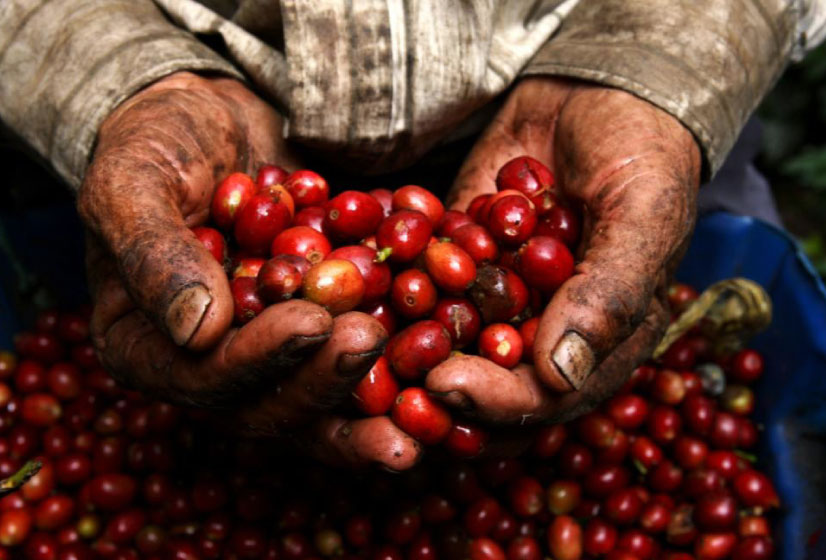Livelihoods of rural populations, especially in developing countries, depend heavily on weather and climate. The use of climate information in decision-making by smallholder farmers, for example, may serve as a possible adaptation strategy to changing climate conditions, and promises potential economic benefits. Providing users with meaningful and timely climate information, however, is challenging and requires a nuanced understanding of the local cultural, social, agricultural and meteorological context. Despite this, the provision of climate information could constitute, especially in the most vulnerable settings, an important element of climate change adaption strategies, and form a key component of poverty alleviation efforts.

Ongoing changes in climate patterns are expected to strain livelihoods in climate-vulnerable regions, hindering global development efforts for poverty reduction and threatening the achievement of the Sustainable Development Goals (1). Increasing frequencies of extreme events such as droughts and intense precipitation, as well as shifts in temporal distribution of rainfalls, are intimately linked to natural, economic and social systems. This occurs through impacts on agricultural production, food security, water and energy resources, health, and biodiversity.
Climate services (“CS” for short) disseminate climate information to different user groups (2). Improved availability of, and access to, climate information through CS is considered a key component for increasing climate resilience and societal preparedness for agrarian communities in developing countries (3). The provision of CS in developing countries, if properly communicated to end users, is an important component of poverty alleviation efforts. In the case of agricultural production, better-informed decision-making has the potential to:
- Avoid crop losses and improve productivity;
- Reduce poverty, and improve food security and health;
- Protect the environment.
Improved food security and health, in turn, have crucial secondary effects including institutional stability, and gender equity (4,5). In fact, in 2009, the third World Climate Conference (WCC) established a Global Framework for Climate Services to strengthen production, availability and delivery of climate information.
How much are CS worth?
Climate services can be seen as public goods. Due to their relatively high fixed costs, their development and implementation are likely to be financed by the public sector. As outlined by the Madrid Action Plan of the World Meteorological Organization, it is of high importance to quantify the benefits of such services to justify the required public investments especially in resource-constrained settings (6).
Valuation of CS consists of computing the economic benefits of climate information which arise through a risk-reduction mechanism. Specifically, reduction in exposure to adverse weather and climate events, as well as appropriate damage-control measures, are relevant for smallholder farmers whose productivity, yields and costs depend directly on air temperature, humidity and precipitation within a specific season.
With access to climate information, farmers can adapt and better plan their production process, taking into account past, current and future climate developments. Such information is especially valuable in the context of changing climatic conditions, including extreme hazards, such as droughts, floods, hurricanes, frosts, pests, etc., which are expected to become more severe in the future due to climate change. Better knowledge of climate conditions allows farmers to take appropriate adaptation, protection and prevention actions and thus avoid crop losses, reduce costs, improve productivity and yields contributing ultimately to income stability and socio-economic resilience.
CS to the aid of coffee farmers
Economic theory provides an array of tools to compute and evaluate benefits of CS (6). In a recent study (7) we propose a dynamic stochastic life-cycle model of a representative farmer whose crop is subject to adverse random climate shocks. Under this model, we assessed the welfare of a farmer with and without access to CS.
The focus of our study was on Peruvian coffee farmers exposed to outbreaks of coffee rust. This research was part of a CS implementation project conducted by the National Meteorological Services of Peru (Senamhi) and Switzerland (MeteoSwiss). In recent years, the spreading of the climate-sensitive fungus Hemelia vastarix, commonly known as coffee rust, has widely caused drops in yields in coffee producing regions of Central and South America threatening livelihoods of a large share of rural households. The adverse effects of coffee rust can be mitigated by a timely application of fungicides which is facilitated by access to climate information (8).
The model mirrors one growing year which is split in several “seasons”, each with its own climatic characteristics, aimed at closely replicating the coffee farmers’ production process and exposure to climate hazards. To estimate correctly the economic benefits of climate services for end-users it is important to identify their socio-economic characteristics, specifics of their agricultural activities, dependence on weather patterns and exposure to extreme events. We collected the relevant data through interviews with coffee and maize farmers in the Cusco region of Peru, and used it calibrate the model so that the agricultural context could be closely replicated. We computed a representative farmer’s welfare under two scenarios: with and without access to climate services.
Since the use of climate information allows the farmer to take appropriate preventive actions in light of possible climate events, and thus avoid crop losses, access to CS leads to welfare gains as compared to a farmer without access to CS. We found that coffee farmers show stronger valuation of climate information, especially in relation to coffee-rust management. Maize farmers, on the other hand, whose crops are mostly sensitive to heavy rainfalls and hail, and have fewer preventive measures available for crop protection, exhibit a lower valuation. These results highlight the need for better understanding the agricultural and meteorological context in order to provide end-users with meaningful and timely climate information.
Can CS reach the last mile?
Despite the potential economic gains, current practices of climate service provision, even when they are available, often fail to provide the climate information in a way that is meaningful to end-users. In particular for smallholder farmers in developing countries, making climate information useful remains a considerable challenge due to cognitive, cultural and institutional constraints (9).
This appears to be particularly true for the poorest countries: in Sub-Saharan Africa, which is classified among the most vulnerable regions worldwide with low ability to adapt to the negative impact of climate change (17), many communities do not have access to appropriate CS (10). Yet, demand for better climate information is widespread (11,12) as large parts of the population depend on uncertain rainfalls and are subject to frequent and severe climate shocks (especially droughts).
Effective communication of climate information to local communities and individual smallholder farmers, the so-called last mile, remains one of the greatest challenges (9, 13) with existing information being often poorly designed for end-users’ needs (10). Research in sub-Saharan Africa has shown that participatory workshops with farmers help them better understand the use of seasonal forecasts (14).
However, access to climate information and according response options are strongly influenced by the socio-cultural context and local power dynamics (15). These factors can often hinder equal distribution of benefits. A recent study in Mali revealed that the utilization rates of agrometeorological information within a specific advisory program was very low (8-24%) especially for women (16) which mirrors the challenge of designing an effective and inclusive CS.
A multi-disciplinary effort
To overcome these key constraints and tap into the high potential benefits CS hold for poor and vulnerable populations, it is important to bridge the gap between the provider of the information and the users through careful tailoring for distinct groups. Delivering climate services that effectively inform decision-makers is a multi-disciplinary effort ranging from understanding the user demand to the actual production of the service itself.
Better-informed decision making needs to be guided by transdisciplinary research combining knowledge from natural and social sciences as well as traditional ecological knowledge in order to understand the livelihood decision-making processes of target populations. More research is required to investigate the circumstances under which user-tailored CS create social and economic value in a development context. Institutional analysis and social impact assessments can help implementers to better anticipate the social effects of applying CS. Furthermore, randomized evaluations should be envisaged to test and improve the effectiveness of CS delivery, and ensure that policy is informed by robust evidence.
We acknowledge the support of the World Meteorological Organization (WMO) through the project Servicios CLIMáticos con énfasis en los ANdes en apoyo a las DEcisioneS (CLIMANDES), project no. 7F-08453.01 between the Swiss Agency for Development and Cooperation (SDC) and the WMO.
Note: All articles on the ANGLE website are published under a CC BY-ND license.








